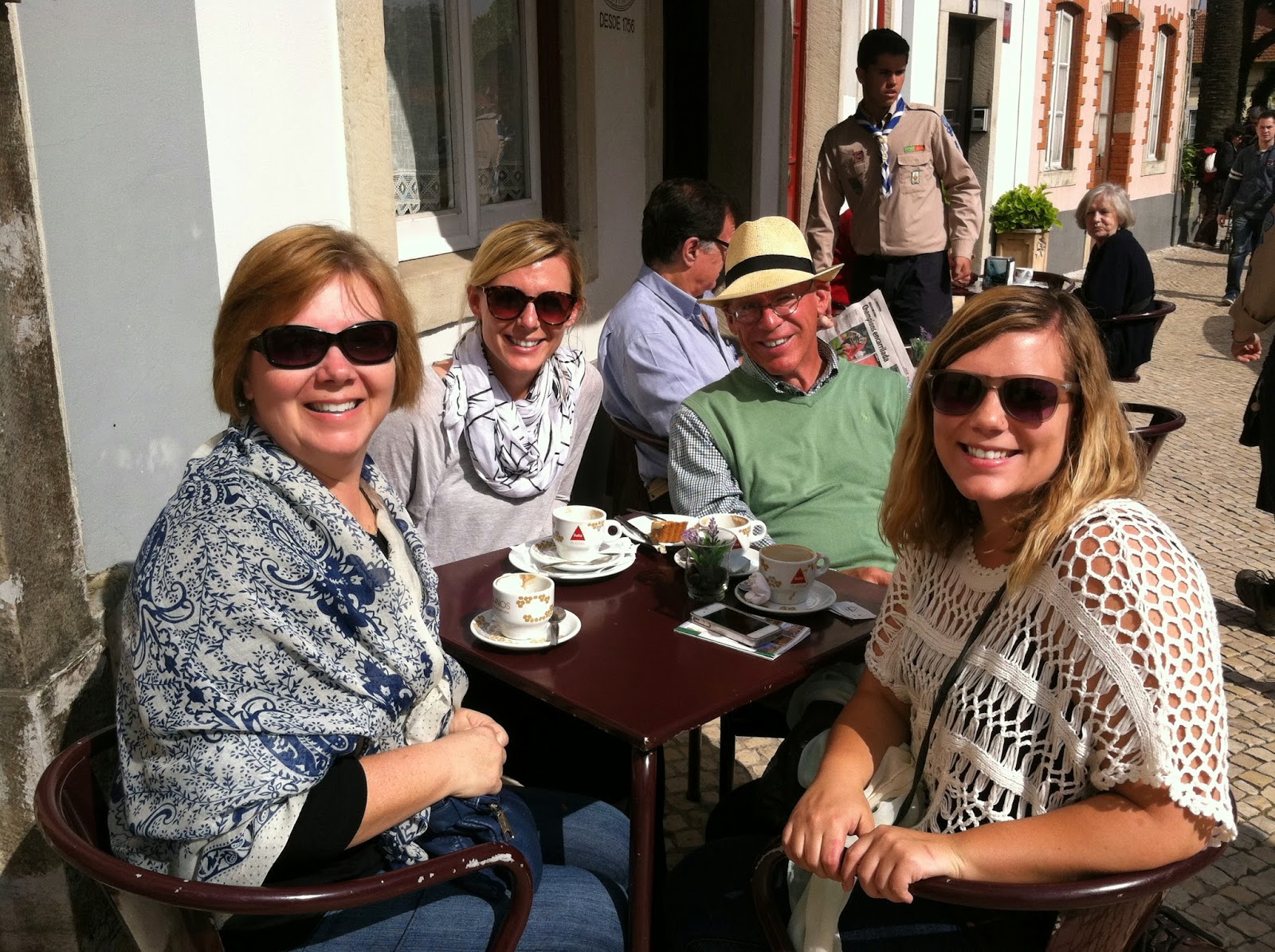 ...and the third day wearing the same clothes because I had no suitcase! The girls offered their scarves to change my look a little so I wouldn't have on the same outfit in every picture.
...and the third day wearing the same clothes because I had no suitcase! The girls offered their scarves to change my look a little so I wouldn't have on the same outfit in every picture.We hopped on a train and headed to Sintra, a little town near Lisbon that Olivia (from her research) and Antonio (our B&B owner) said we MUST see. The Romans settled there first, followed by the Moors who built a hilltop castle, a palace, and several fountains around the town. Later it became the summer residence of the Portuguese royal family and attracted rich aristocrats who built huge mansions. Lord Byron once wrote that the town is "perhaps in every respect the most delightful in Europe." And although it was only the second town in Europe I had ever been to, I would have to say that he could be right!
The first thing we did after arriving in Sintra was enjoy cups of cafe con leche and pastels (more about this later!!) at a sidewalk cafe.
Left - The National Palace is in the background (with the white cones).
Right - See the man filling water bottles from this Moorish natural fountain?
Quinta da Regaleira is a UNESCO World Heritage Site*. It is a mansion, or palace, with lots of turrets and towers and unbelievable architecture, and it's surrounded by a garden filled with mythological symbols, statues of gods, mysterious wells, ponds, and grottoes. And it was unbelievably amazing! Sadly, we didn't have time to actually go inside the palace; we spent the whole time exploring the gardens with its secret paths and caves. We could have spent the entire day here and still not seen it all.
*A UNESCO World Heritage Site is a place (such as a forest, mountain, lake, island, desert, monument, building, or city) that is listed by United Nations Educational, Scientific and Cultural Organization (UNESCO) as being of special cultural or physical significance. In the United States, some UNESCO World Heritage Sites are the Great Smoky Mountains National Park, Grand Canyon National Park, Statue of Liberty, and Yellowstone, just to name a few.
http://en.wikipedia.org/wiki/List_of_World_Heritage_Sites_in_the_United_States



Castelo dos Mouros (The Moorish Castle)
The Moorish Castle is a hilltop medieval castle, and is also a UNESCO World Heritage Site. It was built in the 8th to 9th century, and was eventually taken from the Moors by the Christians. We walked and climbed and climbed and climbed some more, and I knew I would be sore the next day!
 |
| We were above the clouds! |
On to Belém
We were sad to leave, but we got back on the train and returned to Lisbon, then hopped on a bus and headed to another "must-see", the Lisbon parish of Belem. We knew we were getting there too late to see everything, but we wanted to go anyway!
 |
| Padrão dos Descobrimentos (Monument to the Discoveries) celebrates the Portuguese Age of Discovery during the 15th and 16th centuries. |
 |
| Tower of Belem (another UNESCO World Heritage Site!) It was built in the early 16th century to be part of a defense system at the mouth of the Tagus river and a ceremonial gateway to Lisbon |
Time was getting away from us, and we knew we had to hurry or we would miss our transportation back to Lisbon and BED! We ended our time in Belem at a famous pastry shop, Pasteis de Belem. They make wonderful pastels, which are little pies with a custard-like filling. Olivia had introduced us to pastels and cafe con leche (expresso with steamed milk) the day before, and we were HOOKED. No low-carb dieting for me!!!
We made it on the last tram back to Lisbon, walked back to Family Macedo B & B, and guess what?!
My suitcase was waiting for me!!
 |
| Good night, Lisbon. |




















 T
T


Oh my goodness...beautiful, beautiful pictures. I love the way the Moorish castle is up so high. I bet y'all were tired!
ReplyDelete